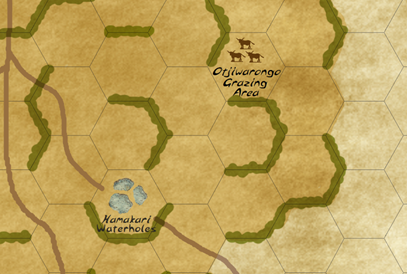
"Review: The Battle of Waterberg, 1904" Topic
1 Post
All members in good standing are free to post here. Opinions expressed here are solely those of the posters, and have not been cleared with nor are they endorsed by The Miniatures Page.
Please avoid recent politics on the forums.
For more information, see the TMP FAQ.
Back to the Early 20th Century Discussion Message Board
Areas of InterestWorld War One
Featured Hobby News Article
Featured Link
Featured Showcase Article A walk down memory lane - do you remember the Tank Trap?
Featured Workbench Article Not just improving a photo, but transforming it using artificial intelligence.
Featured Profile Article The tramp steamer that dreams are made of!
Current Poll
|
Please sign in to your membership account, or, if you are not yet a member, please sign up for your free membership account.
| Tango01 | 13 Aug 2020 8:44 p.m. PST |
by the Historical Gaming Company "…The Battle of Waterberg – the largest battle of the German Herero War of 1904 in what was then Deutche Suedwestafrika – is little known outside of modern Namibia except for a small group of scholars of early twentieth-century genocides and historians specializing in German colonialism. It followed several months of stagnation and setbacks for the German forces in the face of spirited and effective indigenous resistance. It was fought in the dense thornveld beneath the high escarpment of the Waterberg Plateau where thousands of Herero fighters with their families and vast cattle herds confronted six converging German Abteilung: detachments comprising two full Schutztruppe Regiments, supported by native auxiliaries, field artillery, machine guns, and a communications network that included heliography and wireless radio (funkenstation). Despite these advantages, the German sections fought isolated engagements, suffered considerable losses, and failed to meet their primary objective of containing and preventing the Hereros from escaping envelopment. Nevertheless the Hereros were deprived of most of their cattle and were ruthlessly pursued into the arid Omaheke in the East where untold thousands perished. The rules for this game draw closely from historical sources. The layout is attractive with a hexagonal grid overlying terrain that depicts the Waterberg Mountains (treated as a barrier for game purposes), Herero settlements, waterholes and a large cattle grazing area. The hexes within the large Herero staging area are honeycombed with thorny hedges that provide considerable obstacles for the advancing Germans while conferring the advantages of concealment, extra defensive value and free movement to the defending Africans. While this reflects the battle tactics and conditions of the historical engagements fought at the Waterberg, in game terms it reduces German penetration of the Herero setup area to an exercise in close combat trench clearing. As with the tactics used on the Western Front, the German player is wise who takes advantage of ranged artillery before launching strong attacks across a wide front rather than driving right into close combat with whatever Abteilung reaches the battlefield first…"

Main page
link
Amicalement
Armand
|
|

